On 1 April Brighton & Hove Albion will host Brentford in a key Premier League contest when two major schools of thought in modern football will collide – those who prioritise retaining possession and those who prioritise regaining it.
Model Clubs
Brentford and Brighton are recognised as model clubs, but the most interesting aspect to their respective stories is that they selected very different ways to go about achieving success. Both clubs thought about a potential solution to the same problem – how can you perform at a top-six level with a bottom-six budget – and came up with a different answer.
Owners Tony Bloom (Brighton) and Matthew Benham (Brentford) realised, not unreasonably, that they could not match the resources of their rivals – it is very expensive to play like Manchester City. So, if they could not out-spend their opponents, they needed to out-think them.
Benham and Bloom made their money by challenging a prevailing orthodoxy in betting markets. Additionally, both recognized that the leading teams across the world share similar ideas about how to play; that pressing has become the new orthodoxy. Logically, a competitive advantage could be gained by trying to do something different; to challenge the prevailing orthodoxy and use the high press against itself.
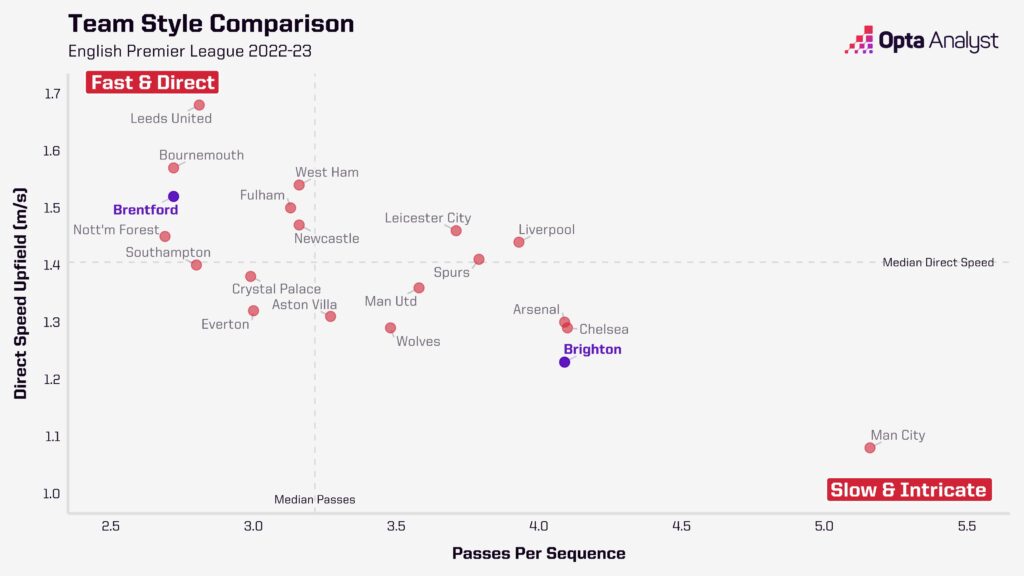
Two clubs, noted for their data-informed approach, crunched the numbers, and produced two distinct ways to maximize their chances of winning. Brentford like to go over the press, Brighton opt to play through it.
Is there a right way to play football? No. This is not a battle between idealism and pragmatism, but, instead, a contest between two competing pragmatisms. There are no absolutes. Contrasting styles are not better or worse than each other, or one more worthy than the other. They’re just different.
Aligned Organisations
Both clubs have excelled at talent identification and development. There is, however, more to it than that. The hierarchy at both Brighton and Brentford have created aligned organizations: both had a vision for what they wished to achieve and devised a strategy to realize that ambition.
Professional football is in thrall to the cult of the individual, but Brighton and Brentford have identified this as flawed thinking. A core reason for their success is that the club’s methods are not concentrated on any one individual. At Brentford and Brighton, the first team manager or head coach performs a role.
Both clubs have developed a style of play which is directly related to their identity. This style of play informs the appropriate recruitment of staff and the subsequent development of talent. The role of the head coach is to implement this style. As a result, the club is not head-coach dependent. When Roberto de Zerbi, for example, succeeded Graham Potter, the Italian was plugged in to Brighton, not the other way round.
The system and the way of working matters, not the individual.
Contrasting Styles of Play
Whether playing in a 4-3-3 or 3-5-2 format, Thomas Frank ensures Brentford defend deep, pack the central spaces, and force the opposition to attack down the flanks. Any subsequent attacking crosses well-suit their aerially-dominant centre-backs (most recently Ethan Pinnock and Ben Mee, the former of who leads all Premier League players for headed clearances per 90 at 4.7) while goalkeeper David Raya loves to advance off his line. Only Aston Villa’s Emiliano Martínez (1.6) averages more goalkeeper claims than Raya’s 1.5 per 90 minutes.
Brentford’s average possession of 43.9% is the sixth-lowest in the league and their predilection to drop off is illustrated by the fact that Frank’s men have registered 25 fewer high turnovers than Brighton (194 versus 219) despite having played two fewer games. In fact, Brentford’s 7.2 high turnovers per game ranks them 17th in the division.
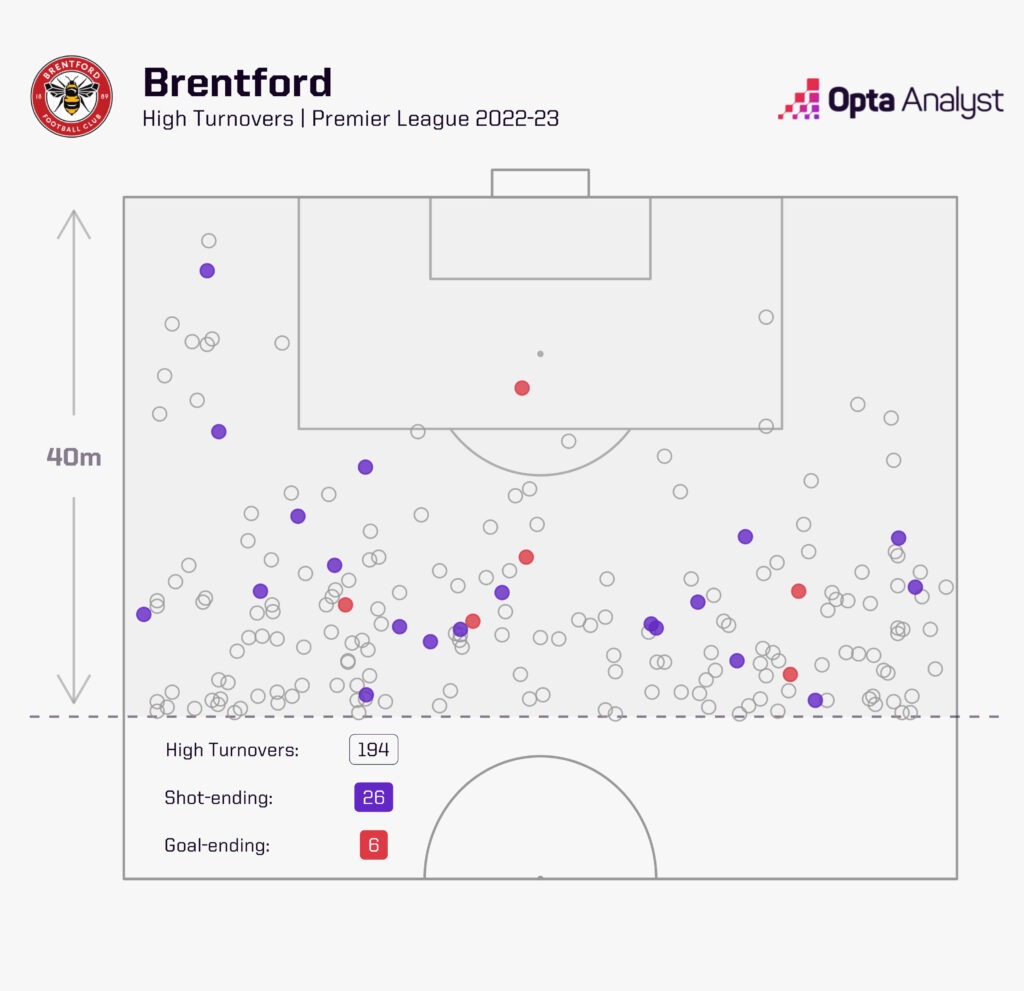
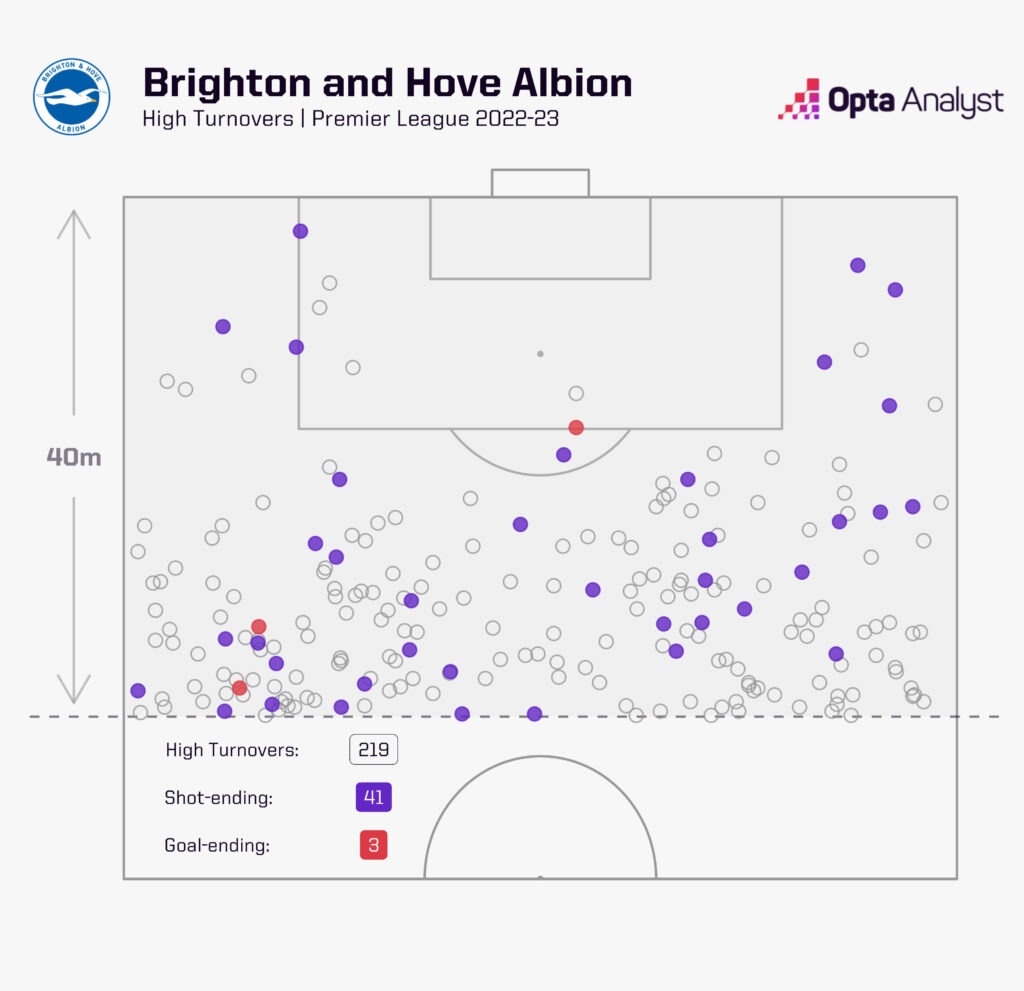
Brentford back off, encourage the opponent to come forward and thereby create the conditions for the counterattack. Thomas Frank’s men may well perceive themselves as being better without the ball (more likely to score and less likely to concede).
Brentford are ruthless on the counter. The Bees’ direct speed (a measure of the average speed in metres per second of how fast a team moves the ball up the field) is 1.52 (fourth highest) while the fact that Brentford launch 72.3% of their goal kicks is noteworthy (Brighton: 36.3%).
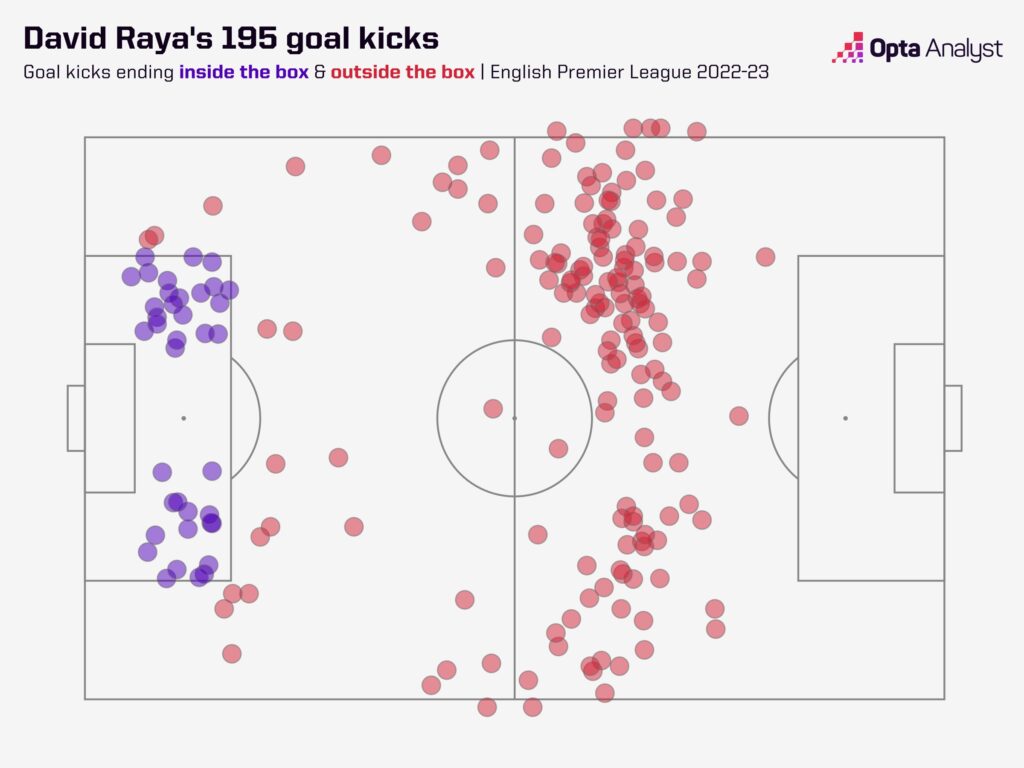
In fact, 16.7% of all of Brentford’s passes are long – the highest rate in the league. That contrasts hugely with Brighton’s 8.7% (third-lowest).
Ivan Toney is an obvious target for back-to-front deliveries with Bryan Mbeumo particularly adept at timing runs in behind. The fact that Toney has attempted 92 flick-ons this season – 42 more than the next-highest player – and the fact that 14.6% of all his passes are attempted flick-ons (by far the highest share in the league) shows just how often he’s targeted with direct balls.
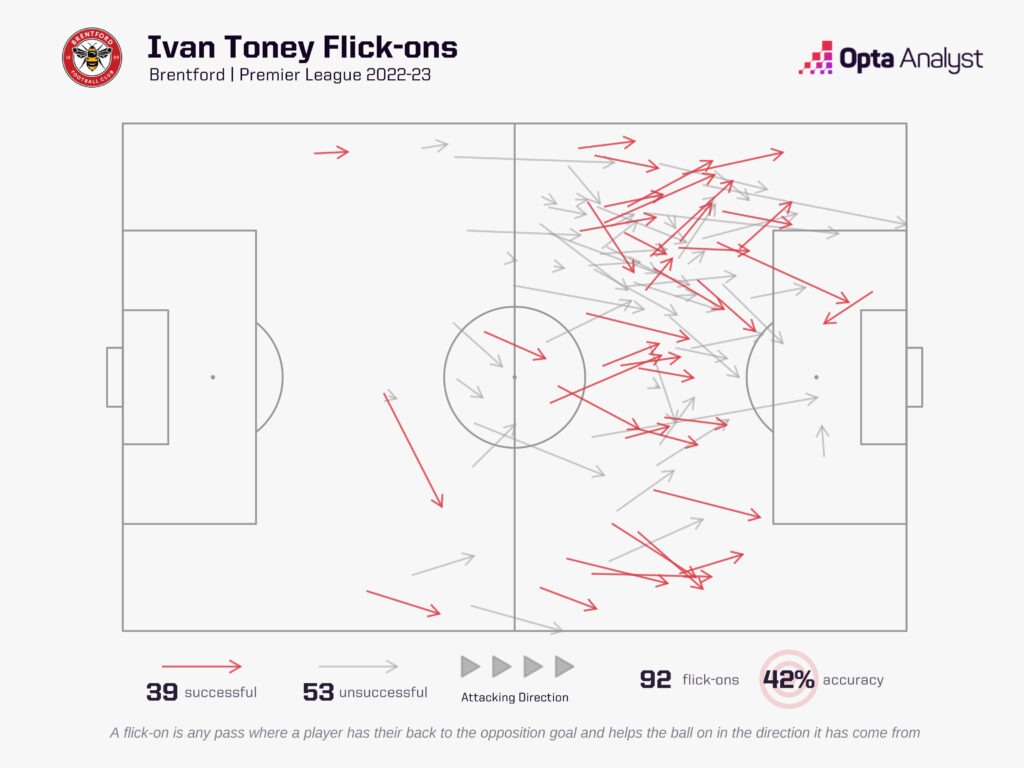
These swift attacks do have not to directly produce goals either, as they can often lead to attacking set pieces, which are particularly valuable given Brentford’s threat at such situations. Brentford are second only to Spurs this season at scoring goals from set pieces (12 non-penalty).
In contrast, Brighton share stylistic traits with the division’s elite teams. Without the ball, they are aggressive, push high and look the win the ball back. Their PPDA – how many passes they allow the opposition to have before they engage – of 11.1 is the third-lowest number in the league.
In possession, they are very different to Brentford. The Seagulls have registered 399 open-play pass sequences of 10 or more passes, a number comparable to the very best – only Manchester City, Arsenal and Chelsea have registered more. They’re also very adept at converting these long passing moves into chances. Brighton are third for build-up attacks (open-play sequences which contain 10 or more passes and result in a shot or a touch in the opposition box) with 99. As the graphic below shows, this is something that Brentford do not even try and do.
Furthermore, Brighton average 4.1 passes per open-play sequence and keep the ball for over 11 seconds per sequence, the third-longest time in the division. the length of Brighton’s average sequence is 11.01 seconds (third longest), Brentford’s is 7.03 (second shortest).
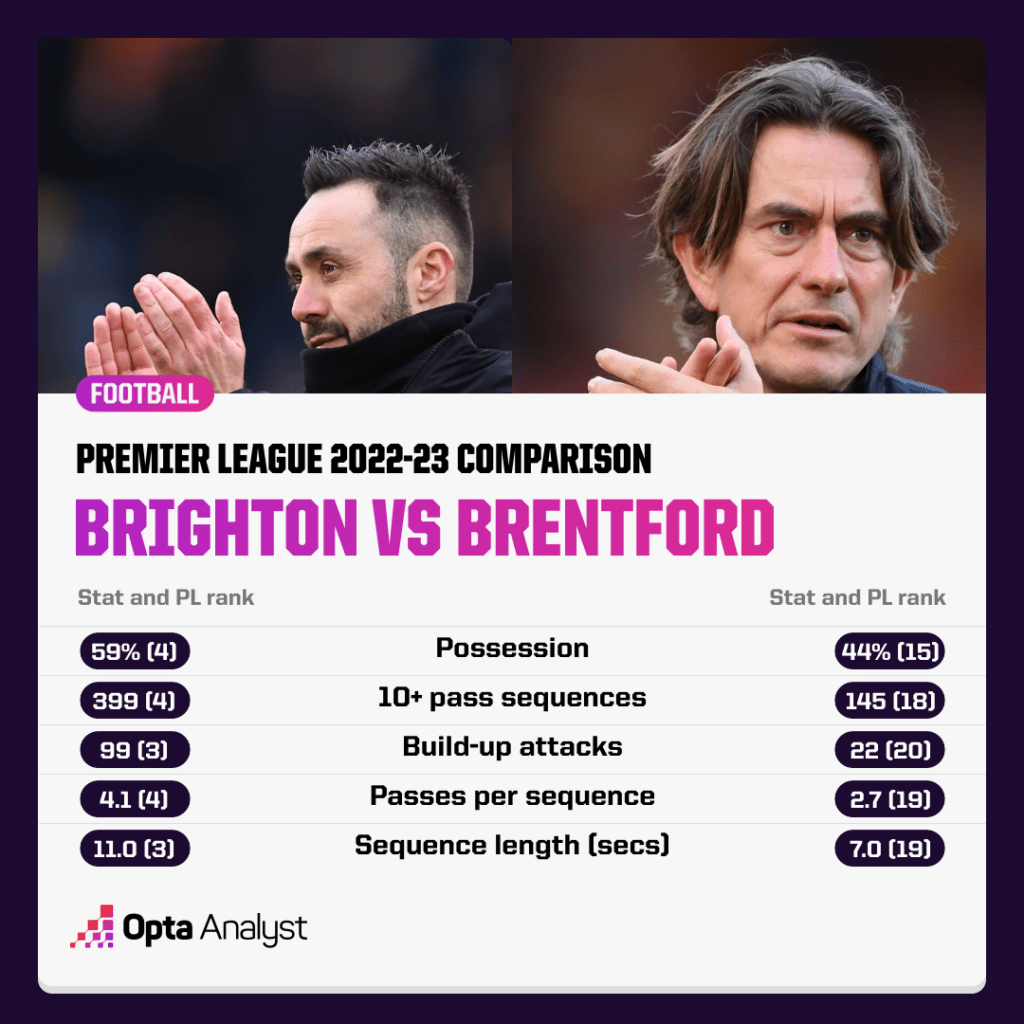
Roberto de Zerbi’s side love to play audaciously deep inside their defensive third with a stated intention to provoke the opposition press, beat the first line and play through.
Brighton often opt to build-up in 2-4 shape with goalkeeper Robert Sánchez a willing accomplice in this endeavour. The whole idea is to manipulate the opposition press and then feed a front four.
The formation could be described as a 4-2-3-1 with the front four backed up by a double pivot – but with two no. 10s in the side it could not be asserted that de Zerbi plays with a dedicated nine. The 10s like to drop off into midfield either side of the opposition holding midfielder and force the centre-halves to make a decision (follow their men or sit tight in no man’s land). If those centre-backs follow their men, that leaves space for Brighton’s dangerous wide men to run into.
Typically, when Brighton break the press a pivot (potentially Moisés Caicedo or Alexis MacAllister) can find Adam Lallana or Evan Ferguson free just inside the opposition half who, in turn, feed an inverted winger (stationed high and wide). Karou Mitoma is right-footed, but features on the left while Solly March is left-footed and plays off the right. Mitoma and March take on their men; the tens attack the box in the subsequent phase.
The technical skill littered amongst Brighton’s squad means they can invite the opposition press and feel comfortable beating it. As a team, they have completed more line-breaking passes in their own half than any other side in the league, while 13.9% of their passes across the pitch are line-breaking – a tally only Arsenal (14.6%) can better.
And chief among Brighton’s line-breakers is central defender Lewis Dunk. The Englishman has completed 244 line-breaking passes in his own half, a full 42 more than the next nearest player (Tim Ream), and he has broken the opposition’s attacking line more often than any other player in the division.
An example from Brighton’s home win against West Ham can bring all these points together.
Dunk, seeing that his immediate passing options are blocked off, fizzes a ball into the feet of Evan Ferguson, breaking both West Ham’s first line and second line.
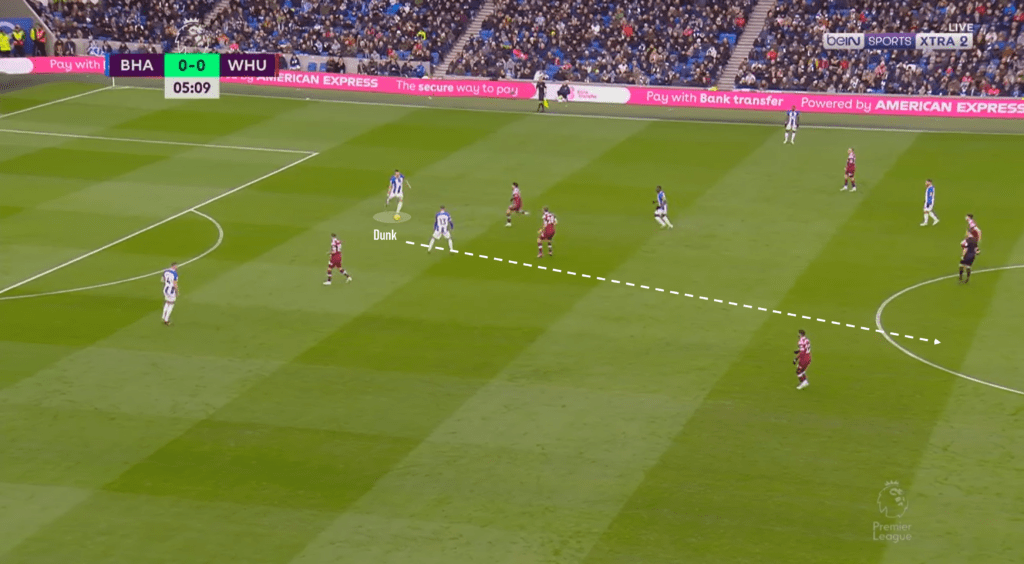
Ferguson holds the ball up excellently.
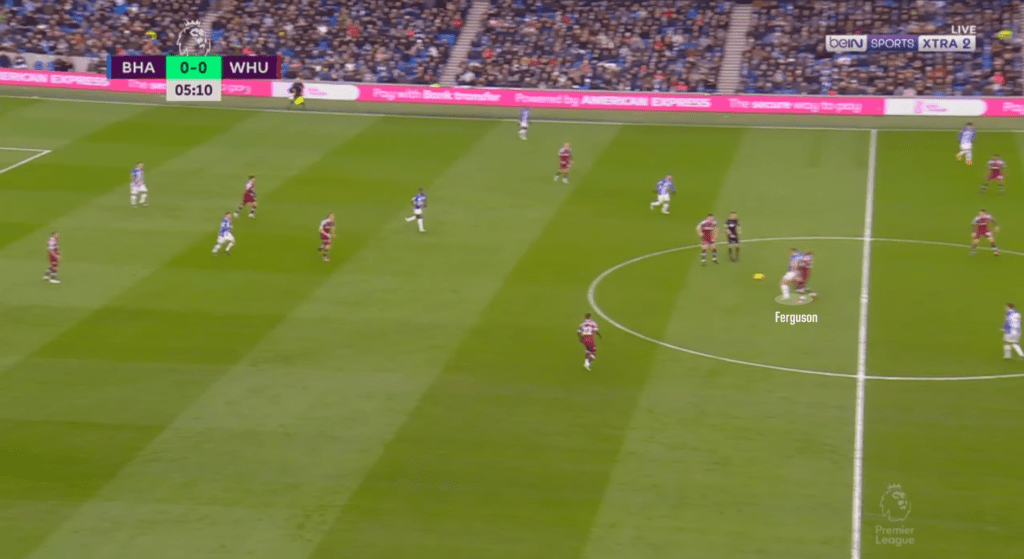
Before laying it off to one of Brighton’s double pivot – in this case, Caicedo.
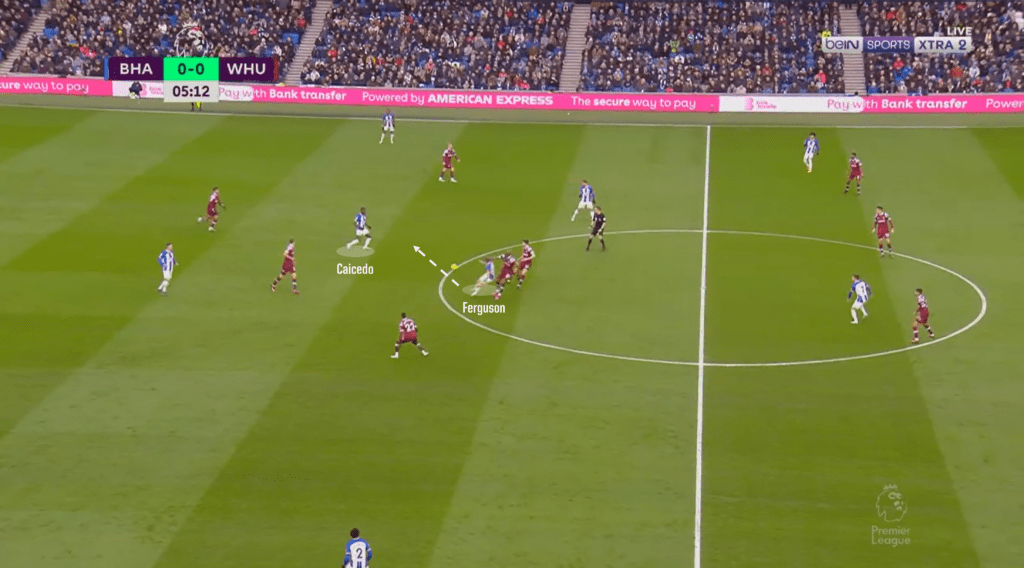
Who pushes the ball quickly onto MacAllister, who then quickly feeds Brighton’s winger, Mitoma who can attack his opposite number.
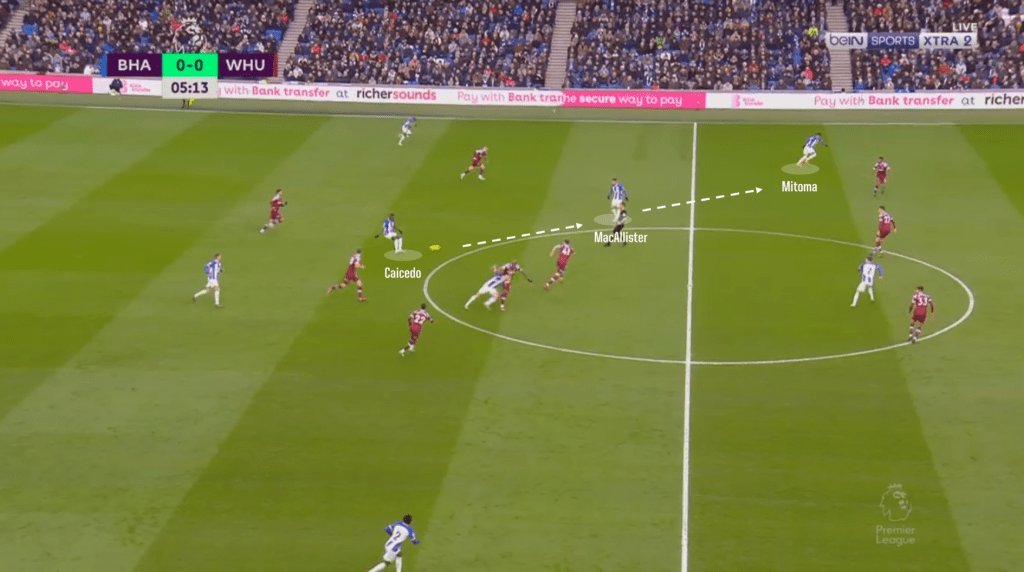
Previous Meeting
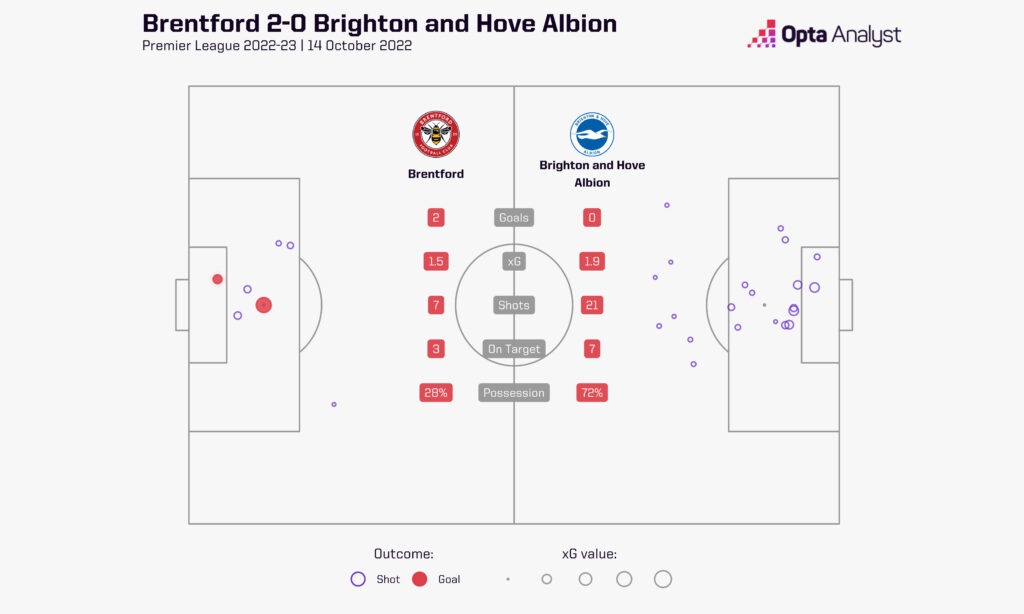
In the overall attacking metrics, Brighton are outperforming their opponents on Saturday. They’re averaging more non-penalty goals per game (1.5 to 1.3), creating more non-penalty xG (1.6 to 1.3), and generating more shots per game (14.4 versus 10.3); but Brentford’s average xG per shot created is higher (0.13 versus 0.11).
When the sides met on 14 October earlier in the season, Brighton owned the game, dominated the shot count 21-7 and enjoyed 72% of the ball. Brighton, of course, lost 2-0. Brentford sat in and caught Roberto de Zerbi’s side on the break.
A similar pattern is likely on this occasion, but it will be fascinating in its own way since Brighton have developed significantly since then – six months ago Pascal Groß and Danny Welbeck started up front in a 4-4-2, but now Brighton feature break-out stars in Ferguson and Mitoma.
How To Think
The Moneyball tag is not one that Tony Bloom and Matthew Benham welcome, but should accept the analogy as a compliment. The way in which Brighton and Brentford have challenged the concept that professional football is a rich man’s game (whereby only those who spend big can hope to achieve) is genuinely refreshing.
Brighton and Brentford have transformed their fortunes by placing data at the centre of their respective organisations and by seeking out a smart(er) way to operate. The hierarchy at both Brighton and Brentford have created a space where elite sports people and ideas can meet.
To unlock hidden potential, you must abandon fixed ideas. Prevailing orthodoxy should be seen as something to be persistently challenged.
There is always a better way to do something. You must be open to counter-intuitive ways of looking at things; reinvention is key to the new frontier and a metaphor for a life lived well.
Ironically, Tony Bloom and Matthew Benham are professional gamblers. In contrast to the caricature, accomplished gamblers strip out all emotion and base their approach on rationality. The opposite, of course, is generally true in football clubs. If many of those entrusted to run Premier League clubs applied a similar strategy to the betting exchanges, they would soon find themselves bankrupt.
These clubs know how to think.
Does yours?
